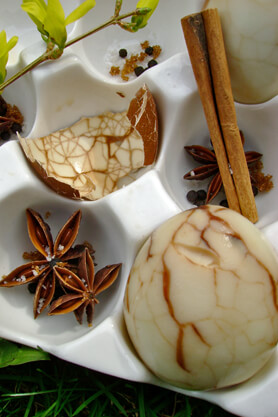Organic Pu Erh Premium Tea
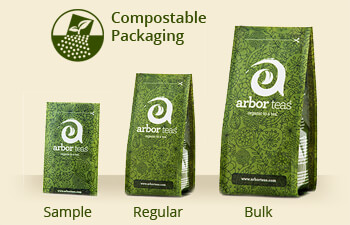
This skillfully crafted Organic Pu Erh Premium loose-leaf tea offers a nuanced and rewarding dark tea experience. Produced using the Shu Cha or "cooked" method of manufacture whereby the pu-erh undergoes an additional fermentation step that speeds-up the aging process. The small, tightly twisted reddish-brown organic tea leaves produce a deep brown infusion with an earthy aroma redolent of mulch and aged leather. The smooth and rounded brew offers notes of dark chocolate, brown bread, and dry earth. A full 10 minute steep concentrates the flavors, and creates a rich, dark cup. An exceptional organic Chinese tea for pu-erh fans, and an elevated introduction for those new to dark tea!
Ingredients: organic Chinese dark tea
Origin: Pu'er Zuxiang Highmountain Tea Garden, Yunnan, China
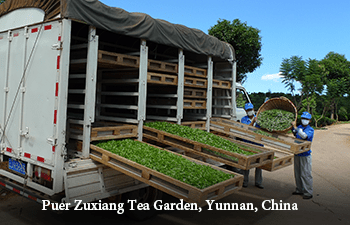
The Yunnan Province of China is home to the city of Pu-erh, the namesake of pu-erh tea, the most famous subset of Chinese heicha (dark tea). The Pu'er Zuxiang Highmountain Tea Garden is located in Zhengwan village, Nanping town in southwestern Yunnan, where the dark red, fertile soil is well-known for its high iron content. In 1998 the Zuxiang garden reclaimed 230 acres of secondary forest land to plant organic tea. Rich in tea history, this area is also steeped in culture; Zuxiang's 160 employees include workers from more than 10 ethnic minority populations, including Dai, Lahu, Yi, and Wa.
Read our blog post about our trip to Pu-erh, China!
Steeping Instructions
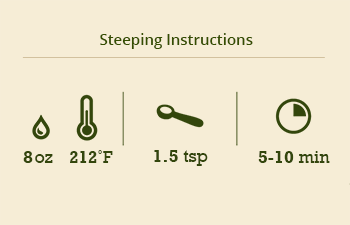
At Arbor Teas, we believe tea should be brewed to suit your personal taste. We’re happy to make recommendations to get you started, but don’t hesitate to experiment! When brewing your tea, your main considerations are tea quantity, water temperature, and steeping time. We recommend dark teas to be steeped for 5 to 10 minutes in water heated to a full, rolling boil. For the best flavor, use fresh water whenever possible, and avoid overboiling. Try not to steep your tea longer than necessary, as you’ll extract undesirable bitterness from the leaves. If you want a stronger brew, don’t steep longer, just use more tea. And don’t forget to re-steep your tea leaves to get the most out of your leaf!
Looking for more info? Check out our How-To Guides and Eco-Brewing Tips!
Staff Perspectives
 Lea
Lea
"A longer steeping intensifies the flavors without unwanted bitterness. Delicious!"
 Jackie
Jackie
”This tea has a nostalgic taste and smell to me. Being from Michigan, a popular summer vacation destination is lovely Mackinac Island. You will find horse drawn carriages and delicious fudge shops. Our Pu Erh Premium carries these scents and tastes unto each cup."
 Sarah
Sarah
"With hints of cocoa and dark fruit jam, this pu’erh is smooth and lovely!"
Health Benefits

Like all true tea, pu erh tea offers many potential health benefits. Research has found that tea (Camellia sinensis) can have many positive effects on human health, including improved cardiovascular function, cancer risk reduction, improved immune function, improved oral health, and help with weight management. Tea is also full of polyphenols, which are a class of antioxidant that help your body maintain homeostasis and balance your stress levels. Pu-Erh specifically has been used in Chinese medicine to support gut health, weight loss, and lower cholesterol.
For more information about the health benefits of pu erh and other types of tea, and for direct sources of the above information, check out our Tea Health Benefits page!
Please note: the information above is for educational purposes only and has not been evaluated by the Food and Drug Administration. This information is not intended to diagnose, treat, cure, or prevent any disease.
Pu-Erh Recipes
Pu Erh: A National Secret
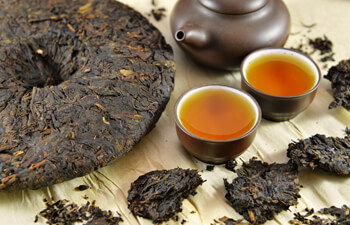
Pu-erh, a city located in the Yunnan Province of China, is the namesake of pu-erh tea, the most famous subset of Chinese heicha (dark tea). Pu-erh processing is a closely guarded secret. Each tea garden has a unique recipe and prides itself on its own distinctive creation. Properly cared for, pu-erh tea is actually alive as enzymes in the tea are allowed to age, greatly enhancing the tea’s flavor over time. This is accomplished by introducing a small amount of moisture at the end of the manufacturing process and allowing the retention of that moisture in the final tea leaf; then aging the leaf in a controlled environment. Pu-erh is the only “aged” tea, and can be fully-oxidized like black tea or unoxidized like green tea. Qing Cha (sometimes referred to as “raw” or “green” pu-erh) is the oldest and most famous version of pu-erh processing. Shu Cha (“ripe” or “cooked” pu-erh) is an accelerated version of Qing Cha that was developed in 1972 to help meet consumer demand. Both methods can produce an excellent tea that improves in value and taste with time, and can be finished as loose leaf tea or pressed into shapes. Pu-erhs that have been aged for 10, 15 or even 25 years and beyond are typically unavailable outside China and are served only to high ranking officials and dignitaries.
For even more information about this and other traditions, visit our Tea Traditions Page!






